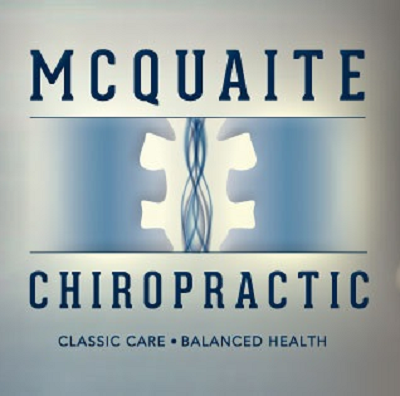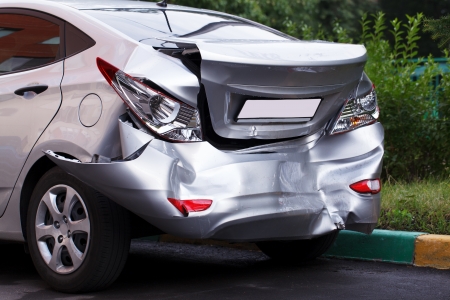
Nov 12, 2021 | Chiropractic Care, neck pain

Ballet dancers have excellent posture, but what about the rest of us?
Most of us spend hours every day sitting. We’re slumped over computers and phones. Then we slouch on the couch watching Netflix. All that slouching affects our breathing, energy levels, and yes, contributes to neck and back pain.
Here’s why.
Imagine sitting in one position for a long time, for example, hunched over your computer. You’re cutting and pasting, typing, rushing to complete a project. If you do this day after day, then your body eventually adapts itself to the posture.
For many people, that means your head juts out slightly forward and your shoulders do the same. This puts constant pressure on your spinal column and muscles and eventually leads to pain because your body isn’t meant to hold such positions for long.
Does this sound familiar?
Ergonomics (and Chiropractic Care) Can Relieve Your Pain
Ergonomics is a term that’s applied to workspaces and it relates to having a healthy environment. Part of a healthy environment is having a work area that’s comfortable for your body. For example, you’ve probably heard of raising your computer monitor so it’s eye level. That’s because the positioning of the monitor at eye level helps your head remain in its natural position rather than bending forward for hours. This shift can improve your posture right away.
There are also ergonomic keyboards, desks, chairs, and mice. They’re all designed to help your body maintain better posture.
For example, having your chair at the right level ensures your hands and arms are able to rest in a natural way and still type while having your computer monitor at eye level means your neck is straighter.
Put them all together, the height of the chair, desk, and computer monitor can improve your posture so that you feel less neck and back pain.
Posture extends to other activities that find you hunched over for long periods too, like gardening, golfing, or gazing at your tablet or phone. If put yourself in the habit of thinking about your posture (thinking about it is half the battle), then you’ll straighten up which will help relieve any pressure in your body. See, habitual patterns of sitting and standing change your anatomy and can cause muscles to put pressure on your nerves.
It’s not uncommon for your hips to be slightly uneven which affects the way you stand and walk. Over time, your body will make minute corrections which can lead to chronic back or neck pain (or both.) If you’ve ever been to a chiropractor, you may remember they’ll look at the length of your legs. The reason is that most people have one leg a little longer than the other. However, a chiropractic adjustment can even them out. As a result, you stand straighter and you feel less pain.
The spinal column is a complex structure made up of over 300 bones, discs, tendons, and thousands of nerves. You may have pain because a muscle is pressing on a tiny nerve. Your chiropractor can help that muscle return to its proper place and free your nerve. Through a simple series of manipulations, you can feel relief from your neck and back pain.
Once you find pain relief, you can do some simple exercises and adjust your habits to help you feel better more often.
Most people don’t think much about their bodies until they’re in pain, and then it’s common for someone to pop a pill for immediate pain relief. Of course, that doesn’t work in the long term.
Chiropractic care helps your body heal itself including your neck and back pain. Ergonomics helps you maintain better posture which also frees the pressure on your neck and back.
Together, you can feel less pain and do the things you want to do. If you’re in the Doylestown, PA area and you have neck and back pain, why not schedule a free consultation to find out how we can help?

Aug 27, 2021 | Chiropractic Care, headache pain, neck pain, neck pain relief, pinched nerve
If you feel tingling down your arms or shooting arm pain, you may have cervical radiculopathy. More commonly known as a “pinched nerve” in the neck, cervical radiculopathy can be excruciating. Or it can be a dull pain.
Firstly, no matter how it feels for you, you’re bothered by it, and it affects your life in some way.
For instance, below, you’ll see the typical symptoms of cervical radiculopathy.
But first, here’s what we mean by “cervical.”
Imagine the back of your head where the base of the neck meets your spinal column. Your shoulders extend from your neck, and from there are nerves, tendons, and ligaments that send messages throughout your body and contribute to your range of motion. When one of those nerves is pinched or compressed, that may be cervical radiculopathy.
For example, if you’ve heard of the cervical spine, that’s the area relating to your neck. Seven bones make up this region, and just like the entire spine, there’s a special disc that separates each bone. Those discs are known as intervertebral discs, and they help your spine stay limber. For instance, when you twist your neck to look over your shoulder, these special discs help with that mobility.
On a related, yet separate note, you may have heard of having pinched nerves in your lower back. As you may guess, this can cause similar feelings but down your legs instead of your arms. That’s lumbar radiculopathy. It’s similar but usually contributes to lower body pain. For the purposes of this article, we’ll stick with the upper body.
Now that you know cervical radiculopathy is a pinched nerve in your neck or shoulder region, you may wonder about the symptoms.
What are the Symptoms of Cervical Radiculopathy?
The symptoms vary, as you can see.
- Pain radiates down your arms.
- Numbness in your arms
- Dull pain in your shoulders/arms
- Tingly sensation in your arms
- Headaches
- Muscle weakness
- Less range of motion.
Left untreated, cervical radiculopathy or a pinched nerve in your neck can lead to permanent nerve damage.
According to Orthoinfo.com, radiculopathy has two common causes. In those of us of a “certain age,” it’s often caused by a breakdown of the discs in between bones, similar to arthritis. In other cases, a traumatic injury could cause it.
No matter the cause, it can be frustrating and debilitating. You might find yourself having to sit out of things you want to do in life. For example, maybe you no longer have the strength to pick up your little dog, or you find yourself in the kitchen unable to pick up a stack of dishes.
You’re probably tired of the pain.
What Treatment Options are There?
Fortunately, there are many treatment options.
- Rest
- Ice/Heat
- Spinal decompression therapy
- Traditional chiropractic treatments
- Acupuncture
- Massage
- Steroid injections
- Over the counter painkillers
- Gentle stretches
- Physical therapy
It won’t be one treatment option in many cases but rather a range of things that will help. Each case is individual, so you’ll want to see your medical professional see what type of treatment plan will work well for your situation.
Yet, before you can treat it, you need to know your diagnosis, your physical abilities, lifestyle, and other specific concerns.
According to a recent study, some benefit from manual therapy, such as physical therapy or chiropractors. This can improve your range of motion and reduce inflammation. With some lifestyle adjustments and medical care, you’ll likely find pain relief.
In conclusion, in Doylestown, PA, Dr. Jeff McQuaite helps many people find pain relief from cervical radiculopathy or pinched nerve in the neck pain. He’ll conduct an x-ray and talk with you about your medical history to work out a treatment plan that makes sense for you. He offers traditional chiropractic care, spinal decompression treatment, and even non-cracking adjustments in his Doylestown office.
Are you ready to find relief?

Aug 12, 2021 | back pain, neck pain, neck pain relief, pain management
One of the things people don’t always realize is how damaging car accidents can be to your body. Even it seems “minor” and there’s only a little dent in your fender, your body sustained a jostle big or small.
Think about it, if you’ve ever hit a large pothole, you know how much that can damage your car alignment. It’s no different with your physical body.
You can get out at the scene of the accident and feel fine at the time. Yet, in the next day or two, you might start feeling achy. This is not unusual. In fact, you may not even connect it to your car accident if it’s several days later or a week later.
For instance, let’s say you were rear-ended by a car going 5 miles an hour. You have a dent in your fender, but otherwise, everything seems fine. Then, a few days later, you have neck pain. Most people don’t realize even such a minor seeming impact is strong enough to cause whiplash and other painful injuries. That’s why chiropractic treatment after a car accident can really help.
Factors in Possible Car Accident Injuries Include:
1- The type of vehicle – both the type of vehicle you’re in as well as what hit you. If you’re in a small car like a Prius and a jeep hits you, your car may have more damage.
2–Angle it hit you – We’ve all seen those roadside accidents where it’s obvious that the vehicle sustained a blow at one of the corners. The direction the vehicles made impact affects the damage on the vehicle and the person inside.
3-How fast it hit you – A light tap on the rear in stop-and-go traffic is not the same as a head-on collision, yet, if that “light tap” damages your fender, that could be enough to knock your body out of alignment too.
4-The location of your headrest to the location of your head – For example, the headrest can offer protection if it cradles the back of your head, but if you have it down and your head whips front and back, then you could have whiplash.
5 – Did you tense in anticipation or was it a surprise? (Surprise car accidents can cause injury to your ligaments whereas if you tense up, the injury is more likely to be in your muscles.)
These are all factors that go into whether your body sustained an injury after a car accident.
Chiropractic Treatment After a Car Accident is a Good Idea
Just like your car may need realignment your body needs realignment periodically. This is especially true after an accident. Even a “minor” accident can knock your spinal column out of place. Fortunately, a chiropractic adjustment will put everything back where it needs to be. In our Doylestown office, we can also run an x-ray to see if there’s any reason for concern internally speaking. Plus, your insurance may cover all or part of your treatment.
If you have a car accident, please don’t delay seeking chiropractic treatment. You deserve to feel good.

Jun 26, 2020 | back pain, Chiropractic Care, neck pain, neck pain relief
When was the last time you woke up with back or neck pain? If you said, “today,” and that’s typical for you, then it’s worth thinking about how you sleep.
As you can imagine, your sleeping position impacts your spinal health. Have you ever fallen asleep in a chair and woken up with a crick in your neck? If so, then your neck needed more support.
The entire purpose of pillows is to cradle your head and neck. Yet, you don’t want it to be too high or low. Ideally, your spine is in a neutral position when you sleep. And by neutral, we mean straight. When your spine is straight, then you’re not twisting it to one side or another for hours on end.
Do you tend to sleep with your pelvis twisted to one side or another? Or, do you sleep on your stomach? Neither of these is good sleeping positions to prevent back or neck pain because they put unnecessary pressure on your spine.
The Best Sleeping Positions to Prevent Back and Neck Pain
These probably won’t surprise you, but the best sleeping positions are on your back or side. You do want to keep your neck well cradled with a good pillow for you, which we’ll cover in a moment, but first, consider the back and side sleeping.
When you’re on your back, with your legs straight out and your arms by your side, your spine is in the straightest position. It’s very happy like this because your body weight is distributed evenly and completely supported. But if you’ve never been a back sleeper, it can be hard to try and train yourself. The easiest way is probably to lay on your back when you’re super tired and allow yourself to relax into the mattress. However, some people find sleeping on their back causes them to snore.
Side sleepers are also in a good place as long as you have a supportive pillow and keep your legs straight. If you’re using an arm for support under your head or pulling your legs up into your chest, then your spine isn’t supported evenly, and you could wake up with back or neck pain.
What’s your preferred sleeping position?
About Those Pillows
There’s a reason there so many types of pillows on the market. From down pillows to memory foam, there’s a pillow for everyone. The right one for you is supporting your neck and head and helping them stay in a straight line with your spine.
If you’re like a lot of people in the Doylestown area, you probably have at least 3 or 4 pillows in your house that you can try. Here’s an exercise you can do to assess them. Take the pillow, put it on your bed, and lie down in your preferred sleeping position. Notice if your neck feels like it’s tilting up or down. Which one feels like it keeps your spine the straightest? If the answer is none, then it may be time for a new pillow.
Of course, if you’re experiencing back and neck pain on a regular basis, it’s a good idea to have it checked out with Dr. Jeff McQuaite in Doylestown, PA. Find out more our neck pain treatment here.

Apr 30, 2020 | neck pain, neck pain relief
Have you ever turned your head and heard your neck crack? Sometimes it feels great and other times, maybe not so good. Either way, you might wonder about that sound. What’s with it? It turns out there’s a special word for it.
That word is “crepitus” which applies to any snap, crackle, pop of the joints.
 On its own, it’s nothing to worry about. Sometimes, you might even gently turn your head side to side to try to find that relief of “ah.” Essentially, it’s trapped gas bubbles so when you release them by turning your neck, you feel relief.
On its own, it’s nothing to worry about. Sometimes, you might even gently turn your head side to side to try to find that relief of “ah.” Essentially, it’s trapped gas bubbles so when you release them by turning your neck, you feel relief.
But if your neck cracking is also painful, that requires professional assistance to discover the reason why.
Let’s talk about the neck cracking.
Imagine those joints in the back of the neck. They’re called facet joints and if you feel the back of your neck, you can feel the knobby texture. Inside these joints is the synovial fluid which keeps your joints lubricated. Then, between each joint is smooth cartilage and an intervertebral disc.
In other words, your neck is designed to be flexible. That way you can turn your head from side to side. But why does it make that weird noise?
Here’s Why You Hear Your Neck Crack
Essentially, there are three main reasons why you hear neck cracking sounds.
1- Pressure Changes – Gas bubbles within the synovial fluid in your joints make a popping noise when they explode. You might also feel a sense of relief and a greater range of motion when this happens. This is normal.
2- Ligament or tendons moving – These are attached to bones and they move around the bone in your body. Sometimes they make a sound as they move.
3- Grinding– Osteoarthritis is caused by the loss of cartilage in the neck and other parts of the body. As you age, losing this cartilage is common and can lead to the bone grinding on bone. Ouch! That is usually painful. If you’re wondering why your neck cracks and hurts, this could be related. You’ll usually be able to see this on an x-ray.
These all apply to your knees, ankles, and other joints too by the way.
Other reasons why your neck could crack and hurt? An accident or post-surgical surgery could affect your neck. If you’re having swelling, please get yourself to a medical professional right away. Also, if your neck always cracks in the same way, that could be a sign that’s something’s amiss.
Is it Safe to Crack Your Neck?
When everyday activities like stretching cause your neck to crack, that’s fine. But you don’t want to seek out opportunities to crack your neck on your own. The reason is that your neck houses plenty of blood vessels and nerves. Improper or forceful neck cracking can lead to pinched nerves or even punctured blood vessels both of which are problems and can lead to more pain.
So if you’re one of those people who likes to enlist help from family or friends in cracking your neck, please don’t. You could do some damage. Instead, find a reputable chiropractor if you haven’t already.
When Does it Make Sense to Visit a Chiropractor for Your Neck?
Regular chiropractic care boosts your immune system and can even reduce your stress. What’s “regular?” We interpret it as at least once a month. That way, your body stays in alignment.
A chiropractor is trained in joint manipulation to help your spine (including your neck) stay flexible which is important for your overall health and the way you feel. For most people, the occasional neck crack is perfectly normal. Neck “crepitus” is nothing to worry about.
However, if you’re in pain, then you definitely want to seek medical treatment and if you feel like you’re constantly trying to crack your neck to find relief or if you have any kind of unusual swelling, then you’ll want to make an appointment right away.
If you’re someone who doesn’t like the idea of a chiropractic adjustment, Dr. Mcquaite also offers a non-cracking adjustment. It offers pain relief without the cracking sound.
Either way, you deserve to feel your best!

Aug 9, 2019 | neck pain, neck pain relief, pinched nerve
Have you been diagnosed with a pinched nerve? Or maybe you have pain in your arm, neck, and shoulder and wonder if it’s stemming from your neck?
A pinched nerve in your neck is can cause pain all the way down your arm. In medical terms, we call it “cervical radiculopathy.” But no matter what you call it, it’s painful. If you’ve got neck and arm pain and you’ve tried changing your pillow, stretching, and a massage but it’s still not going away, then it may be a pinched nerve.
 There are many possible causes for a pinched nerve in neck but the reason is the same. Some piece of the nerve is compressed or “pinched.” The nerve then sends the brain distress signals and you can feel throbbing pain, burning, or weakness in your neck, shoulder, and down your arm.
There are many possible causes for a pinched nerve in neck but the reason is the same. Some piece of the nerve is compressed or “pinched.” The nerve then sends the brain distress signals and you can feel throbbing pain, burning, or weakness in your neck, shoulder, and down your arm.
Causes Related to a Pinched Nerve in Neck
The culprits are usually muscles, tendons, or discs. When one of these swells (muscles or tendons) or shifts (all three), it hurts.
For example, when it comes to the neck, a herniated disc in the spinal column could be the source of the problem. Or disc degeneration. Or a swollen tendon. The only way to know is with an x-ray or other device.
From there, we can make a diagnosis and treatment plan.
Now you may wonder what causes a herniated disc, etc. Sometimes it’s related to an injury. If you had a bad accident, that can cause nerve compression. A pinched nerve can also come from repetitive motion or consistently bad posture.
Of course, there can be other factors.
3 Risk Factors for a Pinched Nerve
According to the Mayo Clinic, there are several risk factors. These are three common ones.
- Rheumatoid Arthritis – This body inflammation can compress nerves.
- Pregnancy – Accompanying bloating and weight gain can cause swelling and put pressure on nerves.
- Diabetes – Chronically high sugar levels can damage nerves.
Pinched Nerve Treatment
Of course, anyone who is in pain most wants to know how you can find pain relief.
In some cases, a little rest will take of matters. Some find the pain goes away on its own. For others, though, you’ll find pain relief from hot and cold compresses, gentle yoga, massage therapy, and chiropractic treatments.
If the source of your pain comes from long hours at the computer, then you’ll want to readjust your posture. Raise or lower your computer screen, switch desk chairs. An ergonomic work area will improve your posture and can reduce your nerve compression.
But a herniated disc or a degenerated disc are different. Most will find relief with regular massage and chiropractic treatments.
As you’re able to, simple therapeutic exercises like rolling your rolling your back/shoulder on a golf or tennis ball can help. You can either lie on the floor or stand against the wall and put the ball behind you using the building to support. Then, move your body against the ball so it moves it around. This can give you a gentle or more intense massage in the painful area.
Building strength can also help. But first, you need to find out if you do have a pinched nerve in neck and create a treatment plan. If you’re Doylestown, Pa. come see us at McQuaite Chiropractic. We take most insurance.











